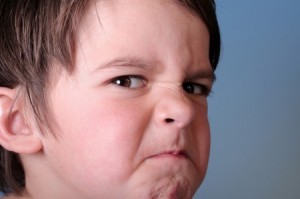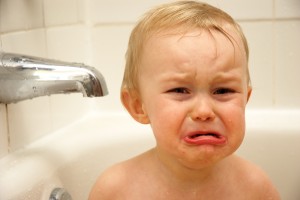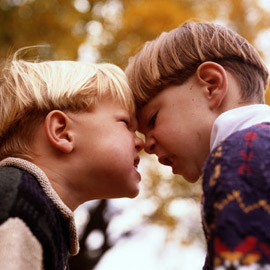Kids tend to show their feelings more than adults. Therefore, the dentist and the parents have to work their way out to understand and control the kids feelings and ensure that they are comfortable with all the dental treatments.
Distress or Cry
At birth : Primary emotion present at birth with vigorous body expressions usually due to hunger, colic or other internal cause.
At 6 months : It is greatly replaced by milder expression of fussing or vocalization.
During preschool : It is seen less, only for the reactions of physical pain as he is thwarted by his environment.
During school years : Pressure helps him to outgrow the crying habit which deceases rapidly. After this till 15 years old, crying occurs very seldom.
In young adults : Ultimately it becomes a limited quiet crying in private only for reasons of grief or other intense emotions.
Different types of Cries seen in Children
Sometimes, the different types of cries can be an asset in diagnosing the behavior of a child. Following are 4 types of crying are usually seen in children
- Obsinate Cry
- The child throws a tantrum to thwart dental treatment
- It is loud and high pitched
- Characterized as a siren-like wail
- This form a belligerent cry. represents the child’s external response to anxiety
    2.Frightened cry
- Usually accompanied by a torrent of tears
- Convulsive breath-catching sobs
- Usually the child emitting this type of cry has been overwhelmed by the situation
  3 .Hurt Cry
- May be loud and more frequent
- Frequently accompanied by a small whimper
- Initially a child in discomfort shows a single tear filling from the corner of the eye and running down the child’s cheek without making any sound or resistance to the treatment procedure.
4. Compensatory Cry
- It is not a cry at all
- It is a sound that child makes to drown out the noise, for example, a drill.
- Usually the cry sound is slow and monotone
- It is sort of coping mechanism to unpleasant auditory stimuli, finding himself uncomfortable in the situation.
Anger
Outburst  of the emotion is caused by the child’s lack of skill in handling the situation. Infant and young children respond in anger in a direct and primitive manner but as they develop, the responses become violent and more symbolic, for example :
- 15 months old children express anger by throwing objects
- 2 years olds attack other children with an intention to hurt
- 4 years olds express their anger through begging

- 5 years olds have less expression of anger
- 6 years olds have a renewal violent methods of expression of anger
- 7 years olds display less aggressiveness, though kicking and throwing objects is observed.
- 8-9 years olds anger is expressed through feelings. It becomes directed towards a single person
- 10 years olds anger may become violent and may be expressed physically
- 12 years olds express anger verbally

- 14 years old may take out his anger on someone else
Tips:
1. Never argue with children who are angry. Have them take a break and continue the conversation later.
2. Identify the anger cues that reveal your child is about to lose control. Point them out early and stop the interaction. Don’t wait for explosions before you intervene.
3. Help children recognize anger in its various disguises like a bad attitude, grumbling, glaring, or a harsh tone of voice.
4. Debrief after the child has settled down. Talk about how to handle the situation differently next time.
5. Teach children constructive responses. They could get help, talk about it, or walk away. These kinds of suggestions help children to have a plan for what they should do, not just what they shouldn’t do.
6. When angry words or actions hurt others, individuals should apologize and seek forgiveness.
Fear
Fear is a reaction to known danger (augmenting the fight or flight response).
It may be defined as an unpleasant emotion or effect consisting of psychological changes in response to realistic threat or danger to one’s own experience
Prevalence of fear :
- Various studies found that incidence of fear to be 3-21 % , depending on the age of the child
- Girls have been reported to have more fears than boys.
Fear of Dental Situation
It is observed that fearful patients usually report a history of traumatic dental experiences. Various types of fear can be observed in the clinic such as :
- Innate Fear : (without stimuli or previous experience) It is thus also dependent on the vulnerability of the individual.

- Objective Fear : Fear from previous unpleasant contact with dentistry and unrelated experiences like repeated hospitalization leading to fear of uniforms worn by dental team or even characteristic smell of hospital, drugs or chemicals associated with unpleasantness arouse fear
- Subjective Fear : Â Family experiences, peer(friends), informative media (TV,papers, comics). Imitative fears are transmitted while displayed by others and acquired by the child without being aware of it.


